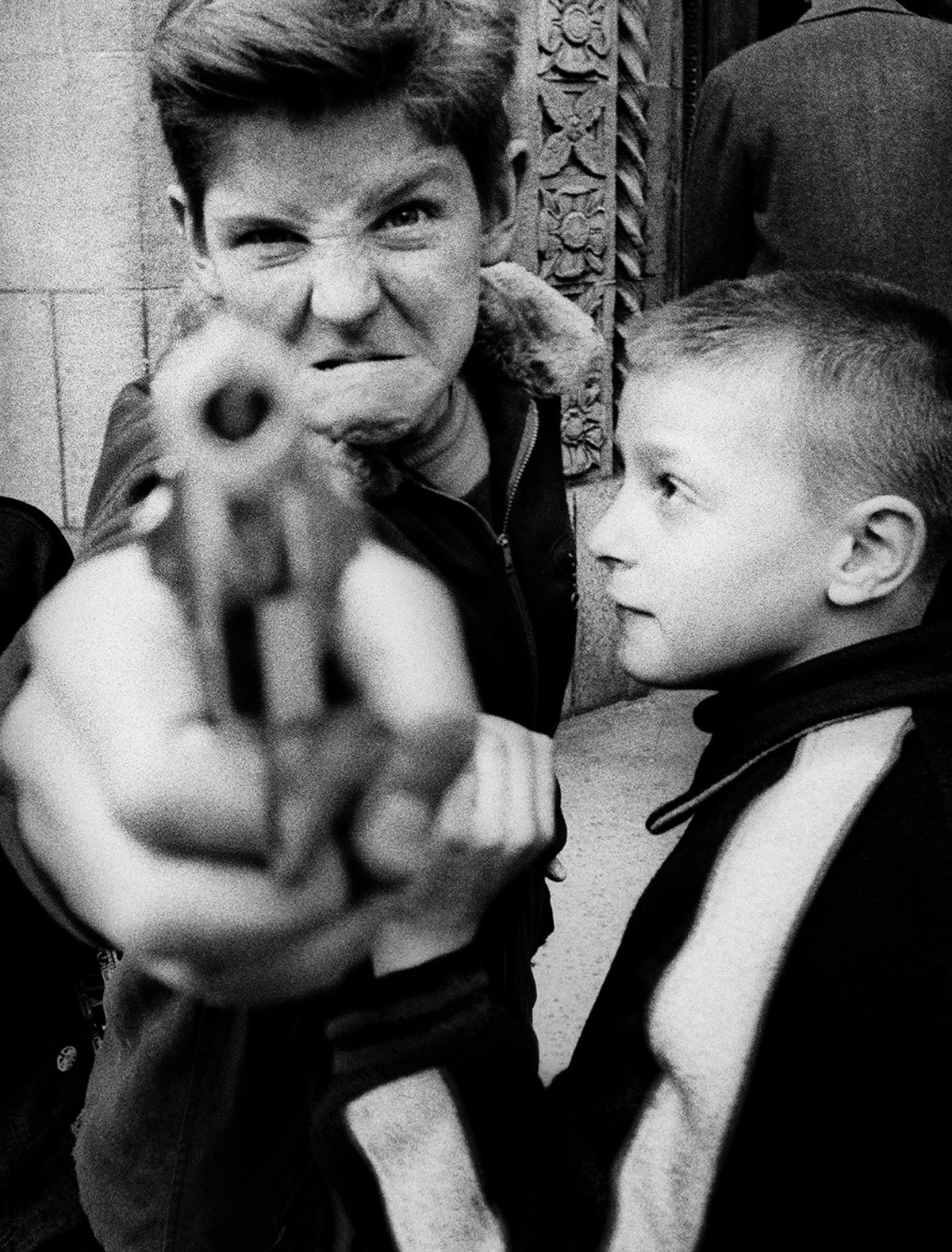In 1954, when William Klein was 26 and living in Paris, he returned to his native New York for a few months and took photos on the street. It was the era of the A-bomb, the baby boom, McCarthyism, and Elvis Presley. Photographers recorded it all quietly, in the style of Henri Cartier-Bresson.
“Current photographic books put me to sleep,” Klein wrote shortly before his death, in September of last year, “a sacrosanct image on the right-hand page, a blank on the left. Inviolate, academic, boring.” Klein’s pictures are the opposite. Brash and theatrical, they jump off the page. In 1956, those street shots were published in a rule-defying book called Life Is Good and Good for You in New York: Trance Witness Revels, which won worldwide recognition.
Klein broke rules his whole life. He was born on the fringes of Harlem, at 110th Street and Fifth Avenue, and studied sociology during the war. In 1946, while stationed in Germany, he won his first camera in a poker game. The G.I. Bill took him straight into Fernand Léger’s atelier. In 1948, on his second day in Paris, he stopped a half-French, half-Flemish student on the street to ask for directions. She was Jeanne Florin, and he married her shortly thereafter.
In Paris, having befriended Ellsworth Kelly and Jack Youngerman, Klein started working on flat paintings, loaded with imagery from popular culture. At a show in Milan in 1952, the architect Angelo Mangiarotti approached him with “an idea for a room divider for an apartment, which would be made of six panels.” Despite never having done anything like that before, Klein was in. “I was 23 you know, I thought I could do anything.” Florin shot the panels with a camera, and Klein was enthralled. He started playing with photographs and light.
In 1954, while presenting his photographic experiments and paintings at Paris’s Musée d’Art Moderne, Klein met Alexander Liberman, who was developing a new aesthetic for Vogue. Liberman financed Klein’s return to New York, and some of his images for Vogue editorials were published in the 1956 book.
Three years after the New York edition, Klein published Rome, chronicling three months roaming the ancient city. Critics described it as sweeter and less acerbic than his New York album. Later came Moscow, Tokyo, and witty fashion photography for various publications. Klein’s film Who Are You, Polly Maggoo?, from 1966, critiqued the fashion world and is a cult classic.
Klein never left Paris. He died there at age 96. In William Klein: Yes, the last of his books, over 250 photographs chronicle his entire career. All reverberate with energy, showcasing the man for the polymath he was: photographer, filmmaker, artist. —Elena Clavarino

Elena Clavarino is the Senior Editor for AIR MAIL









